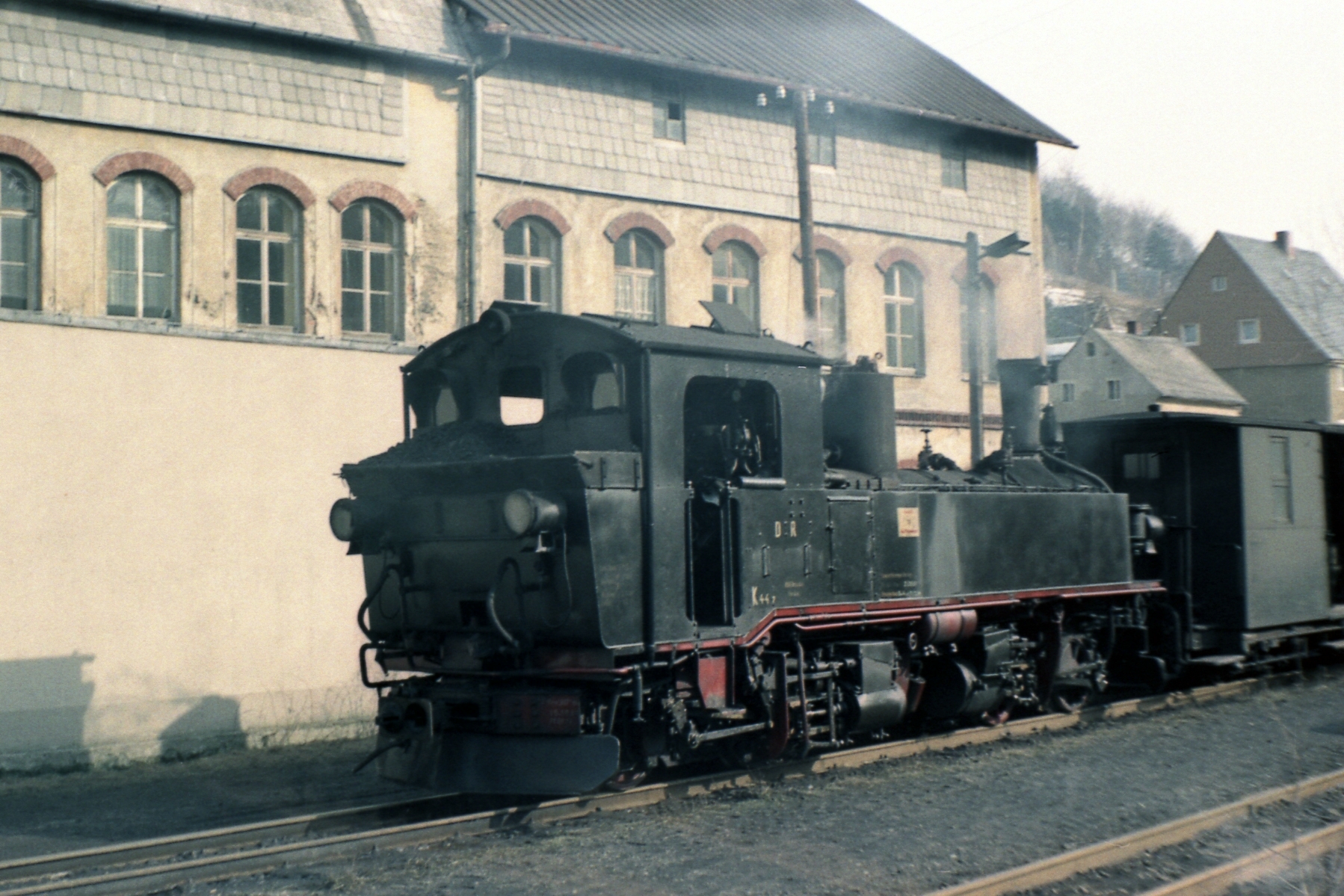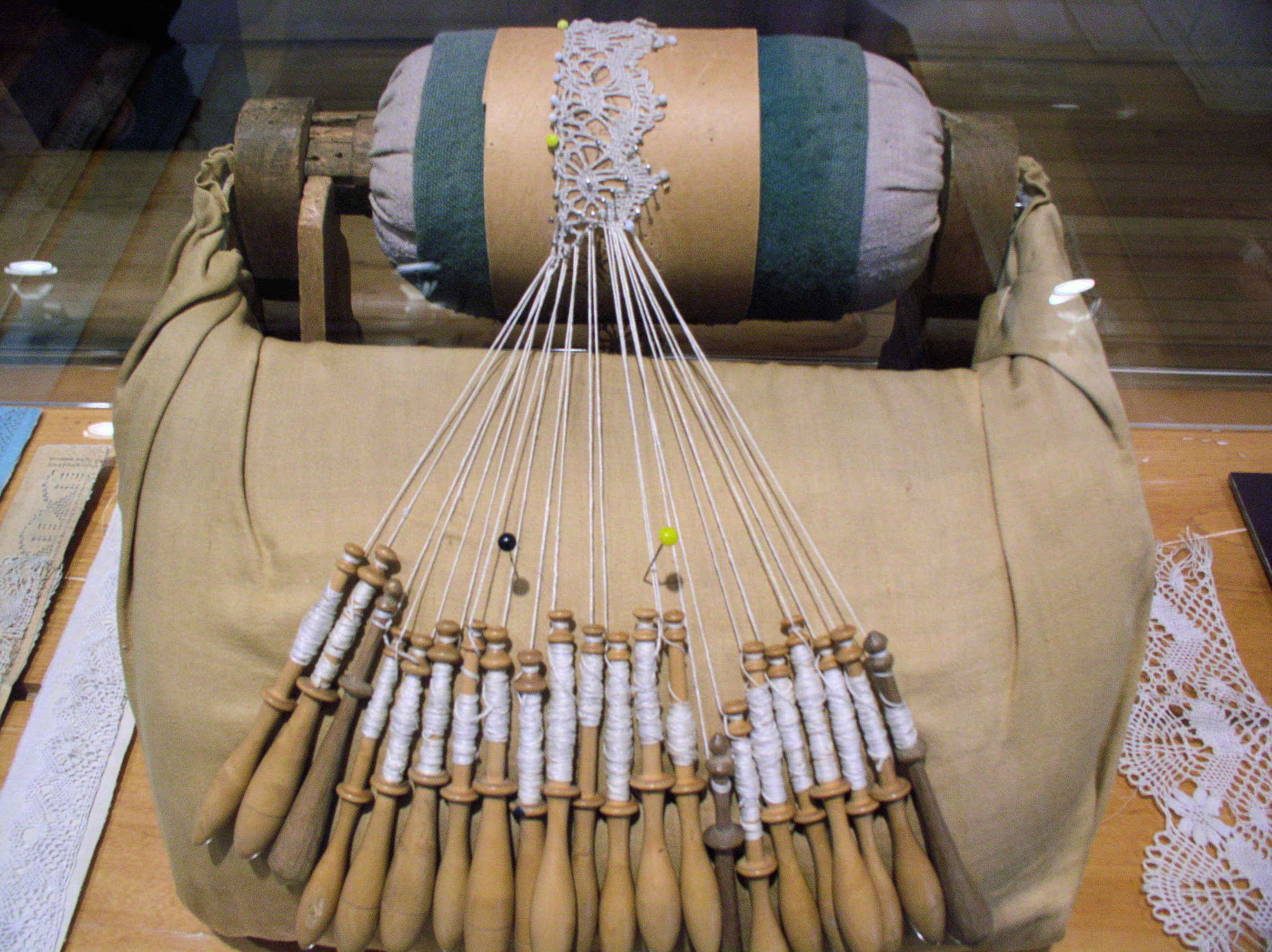|
Thum
Thum is a small town in the district of Erzgebirgskreis in Saxony, Germany. It has a population of about 5,000. Geography Thum is situated in the Ore Mountains, 10 km northwest of Annaberg-Buchholz, and 19 km south of Chemnitz. The Jahnsbach, a tributary to the Zschopau River runs through the town. To the north is Gelenau, east is Drebach, south of Thum is the town of Ehrenfriedersdorf. The Greifensteine area lies to the south west, and Hormersdorf and Auerbach are to the west. History Thum was first mentioned 1389 in historic records of the archdiocese of Prague. From the 14th century, mining in the once densely forested Ore Mountains steadily increased, and a history book of 1445 describes Thum as a small mining town. Several placer deposits, two stamp mills and 27 mines were in the area of Thum. Considerable amounts of Axinite were found, which initially was given the name ''Thumit''. In 1469 the citizens of Thum acquired township. The last battle of the Thirty ... [...More Info...] [...Related Items...] OR: [Wikipedia] [Google] [Baidu] |
Thumer Netz
The Thumer Netz was a narrow gauge railway network in the area around Thum in Saxony, Germany that operated from 1886 until 1975. It had a gauge. Total length was about . This network had three segments that connected three standard gauge stations: In Wilischthal and Schönfeld-Wiesa were connections to the Annaberg-Buchholz-Flöha railway, and in Meinersdorf was a connection to the Chemnitz–Adorf railway. The three segments had their hub in Thum. This set of railroads brought much-needed connectivity and transport capacity to the small towns and villages of the central Ore Mountains, which had formed a viable industry in the 19th century due to abundance of water power, wood, ore and other natural resources as well as cheap labour. A landmark was the long and tall Greifenbach viaduct between Ehrenfriedersdorf and Geyer. History Wilischthal-Thum This was the first segment to be finished for the Thumer Netz. Construction started in September 1885, and operatio ... [...More Info...] [...Related Items...] OR: [Wikipedia] [Google] [Baidu] |
Narrow Gauge Railways In Saxony
The narrow-gauge railways in Saxony were once the largest single-operator narrow-gauge railway network in Germany. In Saxony, the network peaked shortly after World War I with over of tracks. At first, it was primarily created to connect the small towns and villages in Saxony – which had formed a viable industry in the 19th century – to already established standard-gauge railways. But even shortly after 1900, some of the railways would become important for tourism in the area. History Beginnings Around 1875, the Royal Saxon State railway network, unlike other states in Germany, had already expanded to cover most of the territory of Saxony. Due to the mountainous terrain, any further expansion was met with a disproportional cost increase. In order to keep costs down, most new track projects were then planned and executed as branch lines, with smaller radii for curves, simpler operating rules and unsupervised stations and yards as the primary means to save costs. However ... [...More Info...] [...Related Items...] OR: [Wikipedia] [Google] [Baidu] |
Erzgebirgskreis
Erzgebirgskreis is a district ('' Kreis'') in the Free State of Saxony, Germany. It is named after the Ore Mountains (German: ''Erzgebirge''), a mountain range in the southern part of the district which forms part of the Germany–Czech Republic border. It borders (from the west and clockwise) the districts of Vogtlandkreis and Zwickau, the urban district Chemnitz, the district Mittelsachsen and the Czech Republic. History The district was established by merging the former districts of Annaberg, Aue-Schwarzenberg, Stollberg and Mittlerer Erzgebirgskreis as part of the district reform of August 2008. Geography The district contains the western part of the Ore Mountains, which also forms the border with the Czech Republic. Several rivers that rise in the Erzgebirge flow through the district, including Zwickauer Mulde and Zschopau. Sister districts The Erzgebirgskreis has partnerships with the following districts: [...More Info...] [...Related Items...] OR: [Wikipedia] [Google] [Baidu] |
Placer Deposit
In geology, a placer deposit or placer is an accumulation of valuable minerals formed by gravity separation from a specific source rock during sedimentary processes. The name is from the Spanish language, Spanish word ''placer'', meaning "alluvium, alluvial sand". Placer mining is an important source of gold, and was the main technique used in the early years of many gold rushes, including the California Gold Rush. Types of placer deposits include alluvium, eluvium, beach placers, aeolian placers and paleo-placers. Placer materials must be both dense and resistant to weathering processes. To accumulate in placers, mineral particles must have a specific gravity above 2.58. Placer environments typically contain black sand, a conspicuous shiny black mixture of iron oxides, mostly magnetite with variable amounts of ilmenite and hematite. Valuable mineral components often occurring with black sands are monazite, rutile, zircon, chromite, wolframite, and cassiterite. Early mining opera ... [...More Info...] [...Related Items...] OR: [Wikipedia] [Google] [Baidu] |
Zschopau
Zschopau (), is a town in the Erzgebirgskreis district of Saxony, Germany. The town grew around the castle, which was built in the mid-12th century to protect the Salt Road, which crossed the Zschopau River here. Mining was also practiced from the 14th century onward, and in 1493, Zschopau was granted the privileges of a " Freie Bergstadt" However, its importance always lagged behind the major mining towns in the Ore Mountains. The development of crafts and trades was favored by the trade route; in 1451, Zschopau was granted market rights and in 1466, brewing rights. The first guilds of weavers and calico printers were founded as early as 1529. Later, textile factories and spinning mills developed, which favored Zschopau's early transformation into an industrial city at the beginning of the 19th century. Motorcycles have been built in Zschopau since 1922. The world's first motorcycle assembly line was located here in 1926, and the ''Zschopauer Motorenwerke'', with its DKW bran ... [...More Info...] [...Related Items...] OR: [Wikipedia] [Google] [Baidu] |
Narrow Gauge Railway
A narrow-gauge railway (narrow-gauge railroad in the US) is a railway with a track gauge (distance between the rails) narrower than . Most narrow-gauge railways are between and . Since narrow-gauge railways are usually built with Minimum railway curve radius, tighter curves, smaller structure gauges, and lighter Rail profile, rails; they can be less costly to build, equip, and operate than standard- or broad-gauge railways (particularly in mountainous or difficult terrain). Lower-cost narrow-gauge railways are often used in mountainous terrain, where engineering savings can be substantial. Lower-cost narrow-gauge railways are often built to serve industries as well as sparsely populated communities where the traffic potential would not justify the cost of a standard- or broad-gauge line. Narrow-gauge railways have specialised use in mines and other environments where a small structure gauge necessitates a small loading gauge. In some countries, narrow gauge is the standard: Ja ... [...More Info...] [...Related Items...] OR: [Wikipedia] [Google] [Baidu] |
Textile Industry
The textile industry is primarily concerned with the design, production and distribution of textiles: yarn, cloth and clothing. Industry process Cotton manufacturing Cotton is the world's most important natural fibre. In the year 2007, the global yield was 25 million tons from 35 million hectares cultivated in more than 50 countries. There are five stages of cotton manufacturing: * Cultivating and harvesting * Preparatory processes * Spinning — giving yarn * Weaving — giving fabrics * Finishing — giving textiles In the textile industry, textile engineering is an area of engineering that involves the design, production, and distribution of textile products through processes including cultivation, harvesting, spinning, weaving, and finishing of raw materials, encompassing both natural and synthetic fibers. Synthetic fibres Artificial fibres can be made by extruding a polymer, through a spinneret (polymers) into a medium where it hardens. Wet spinning (rayon) uses a c ... [...More Info...] [...Related Items...] OR: [Wikipedia] [Google] [Baidu] |
Bobbin Lace
Bobbin lace is a lace textile made by braiding and twisting lengths of yarn, thread, which are wound on #Bobbins, bobbins to manage them. As the work progresses, the weaving is held in place with pins set in a lace pillow, the placement of the pins usually determined by a pattern or pricking pinned on the pillow. Bobbin lace is also known as pillow lace, because it was worked on a pillow, and bone lace, because early bobbins were made of bone or ivory. Bobbin lace is one of the two major categories of handmade laces, the other being needle lace, derived from earlier cutwork and reticella. Origin A will of 1493 by the Milanese House of Sforza, Sforza family mentions lace created with twelve bobbins. There are two books that represent the early known pattern descriptions for bobbin lace, ''Le Pompe'' from Venice and ''Nüw Modelbuch'' from Zürich. Other popular lace pattern books were produced by Isabella Parasole, which included patterns for reticella, needle lace and bobbin ... [...More Info...] [...Related Items...] OR: [Wikipedia] [Google] [Baidu] |
Christmas Pyramid
Christmas pyramids () are Christmas decorations that have their roots in the folklore and customs of the Ore Mountain region of Germany, but which have become popular internationally. They comprise a decorated pyramidal outer frame with candle holders and a central carousel with a rotor at the top which is driven by warm air from the lit candles. The carousel is decorated with nativity scenes and other Christmas figures such as angels and wise men, as well as worldly motifs such as mining folk and forest scenes. Description It is suggested that the Christmas pyramid is a predecessor of the Christmas tree. These pyramids are not limited to Christmas: in the Ore Mountains there was a custom of dancing around the "St. John's Tree", "a pyramid decked with garlands and flowers", at the summer solstice. Not actually pyramid-shaped, the Christmas pyramid is a kind of carousel with several levels, some depicting Christian motifs such as angels or manger scenes, and others with more ... [...More Info...] [...Related Items...] OR: [Wikipedia] [Google] [Baidu] |
Schwibbogen
A ''Schwibbogen'' () is a decorative candle-holder from the Ore Mountains region of Saxony, Germany. The first metal ''schwibbogen'' was made in 1740 in Johanngeorgenstadt. The early candle arches consisted of a single forged piece of black metal which could be painted. The number of candles varies with the size of the arc, the original design holding eleven. In the UK candle arches or candle bridges are marketed, often just consisting of a simple wooden stepped arch with 7 electric candles. These are not strictly ''schwibbögen''. Background The name ''Schwibbogen'' () is from the Middle High German ', "to hover". The development of the ''schwibbogen'' arch is closely related to the mining traditions of the Ore Mountains. It most likely developed as a candle holder made from metal for the Christmas shift (''Mettenschicht''), a common dinner celebrated by miners, the mining foreman ('' Steiger'') and the smith who had been responsible for the mining tools throughout the year. ... [...More Info...] [...Related Items...] OR: [Wikipedia] [Google] [Baidu] |
Electorate Of Saxony
The Electorate of Saxony, also known as Electoral Saxony ( or ), was a territory of the Holy Roman Empire from 1356 to 1806 initially centred on Wittenberg that came to include areas around the cities of Dresden, Leipzig and Chemnitz. It was a major Holy Roman state, being an Prince-elector, electorate and the original protecting power of Protestant principalities until that role was later taken by its neighbor, Brandenburg-Prussia. In the Golden Bull of 1356, Emperor Charles IV, Holy Roman Emperor, Charles IV designated the Duchy of Saxe-Wittenberg an electorate, a territory whose ruler was one of the prince-electors who chose the Holy Roman emperor. After the extinction of the male Saxe-Wittenberg line of the House of Ascania in 1422, the duchy and the electorate passed to the House of Wettin. The electoral privilege was tied only to the Electoral Circle, specifically the territory of the former Duchy of Saxe-Wittenberg. In the 1485 Treaty of Leipzig, the Wettin noble house w ... [...More Info...] [...Related Items...] OR: [Wikipedia] [Google] [Baidu] |
Thirty Years' War
The Thirty Years' War, fought primarily in Central Europe between 1618 and 1648, was one of the most destructive conflicts in History of Europe, European history. An estimated 4.5 to 8 million soldiers and civilians died from battle, famine, or disease, while parts of Germany reported population declines of over 50%. Related conflicts include the Eighty Years' War, the War of the Mantuan Succession, the Franco-Spanish War (1635–1659), Franco-Spanish War, the Torstenson War, the Dutch-Portuguese War, and the Portuguese Restoration War. The war had its origins in the 16th-century Reformation, which led to religious conflict within the Holy Roman Empire. The 1555 Peace of Augsburg attempted to resolve this by dividing the Empire into Catholic and Lutheran states, but the settlement was destabilised by the subsequent expansion of Protestantism beyond these boundaries. Combined with differences over the limits of imperial authority, religion was thus an important factor in star ... [...More Info...] [...Related Items...] OR: [Wikipedia] [Google] [Baidu] |








